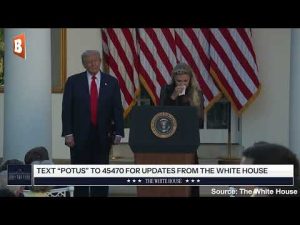In a bold move reminiscent of his domestic policies, former President Donald Trump has agreed to extend a massive $20 billion economic lifeline to Argentina. This decision has raised eyebrows across the United States, especially among those who advocate prioritizing American interests. The backdrop of this complicated financial arrangement features Argentina’s new president, Javier Milei, a man known as much for his unconventional approach—wielding chainsaws as a symbol of his radical economic reforms—as he is for his ambitious plans for his nation.
Javier Milei took office with a hefty promise of radical change. After years of economic struggle, Argentina found itself in a dire situation: skyrocketing inflation reaching over 25% and nearly half the population living in poverty. Naturally, the citizens turned to Milei, who arrived with a plan that could only be described as a cash-cutting crusade. His approach included slashing public spending, dismissing public workers, and shutting down ministries, all to restore faith in Argentina’s economy—a feat he was determined to achieve. While Milei’s policies initially attracted investors back to the country, restoring some faith in the peso, the reality on the ground has not been so rosy.
The intricacies of Argentina’s economy make it uniquely challenging. While the peso is the official currency, many citizens prefer holding U.S. dollars, fearing that their national currency will continue to lose value. As Milei implemented his currency control measures, which included a strategy known as crawling peg, concerns began to mount. Investors were wary of the risks associated with such unstable currency management, especially as Milei’s approval ratings plummeted after local elections. Those concerns escalated into market panic, leading to a sell-off of the peso. In a desperate attempt to stabilize things, Milei’s central bank spent $1 billion from its dwindling reserves—yet the situation refused to calm.
Enter Trump, who, despite his own political challenges, saw an opportunity to support a fellow populist leader while strategically reinforcing American interests in the region. In late September, the Trump administration proposed a surprising $20 billion aid package. This support initially calmed the stormy markets in Argentina, but stirred a hornet’s nest among conservative circles back in the U.S. Critics questioned why taxpayer money would be directed to help a foreign nation in crisis, particularly one perceived as competing against American agricultural exports.
Amidst the political fallout in the U.S., supporters of Trump assert that the assistance is necessary to safeguard American interest. They argue that without stabilizing the Argentine economy, a cascading crisis could ensue, jeopardizing investments and creating economic instability in the broader region. Democrats, however, have accused the administration of bailing out wealthy American investors huddling in the shadows, poised to lose big should Argentina go belly up. They claim that labeling this assistance as anything but a bailout misrepresents the true nature of the financial intervention.
Regardless of the debates raging in the States, the pressure on Milei continues to grow. With an already precarious political landscape and the looming midterm elections on October 26, his administration must deliver tangible results or face mounting criticism. For many, this $20 billion could serve as a mere Band-Aid on a poorly stitched economic wound. Ultimately, the financial fates of both Argentina and the United States might be intertwined if Milei cannot steer his nation back toward stability—adding yet more complexity to an already tangled web of international finance. While Trump may have thrown Argentina a lifeline, the questions about the implications of such a move remain as fervent as ever.







